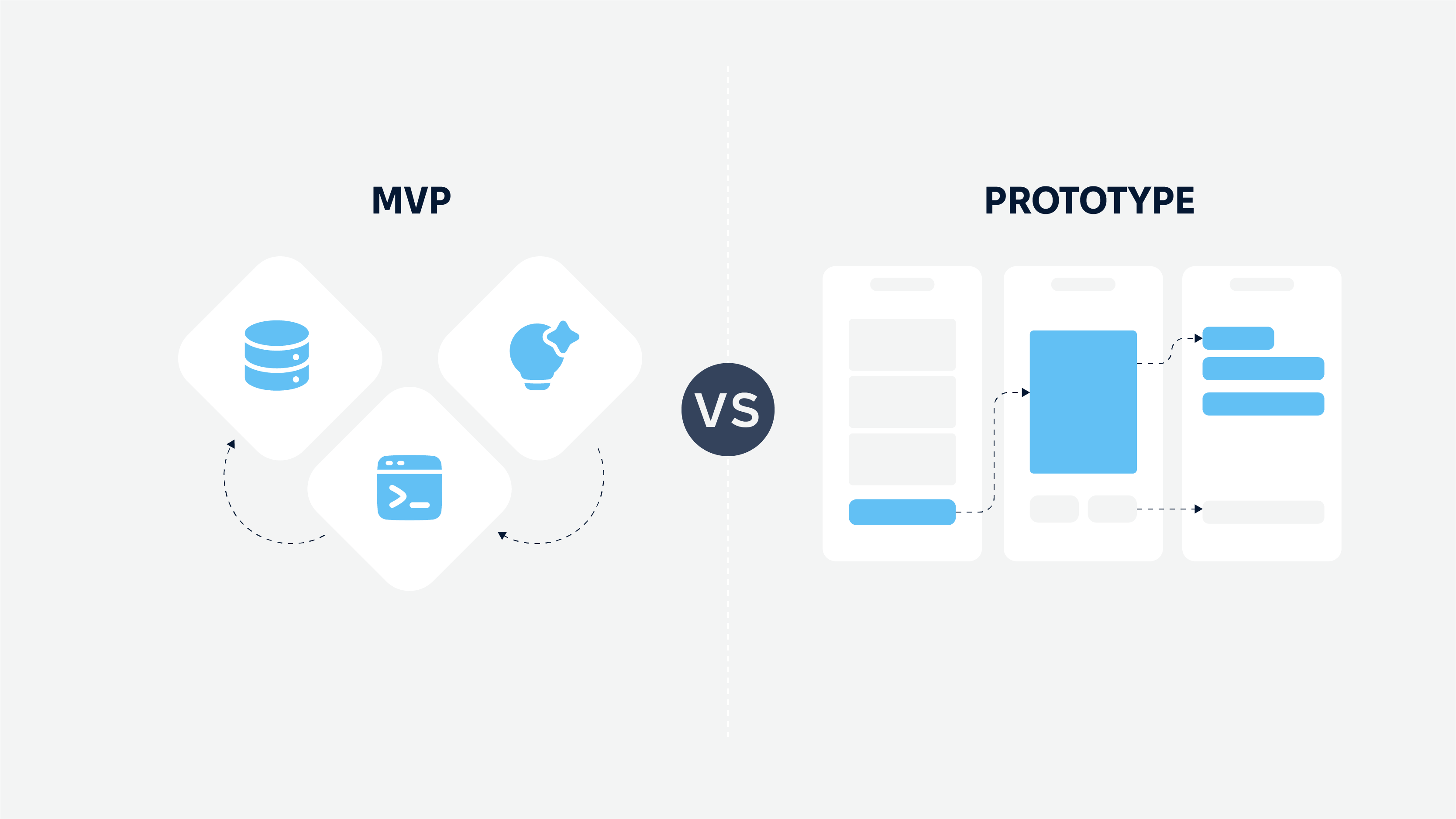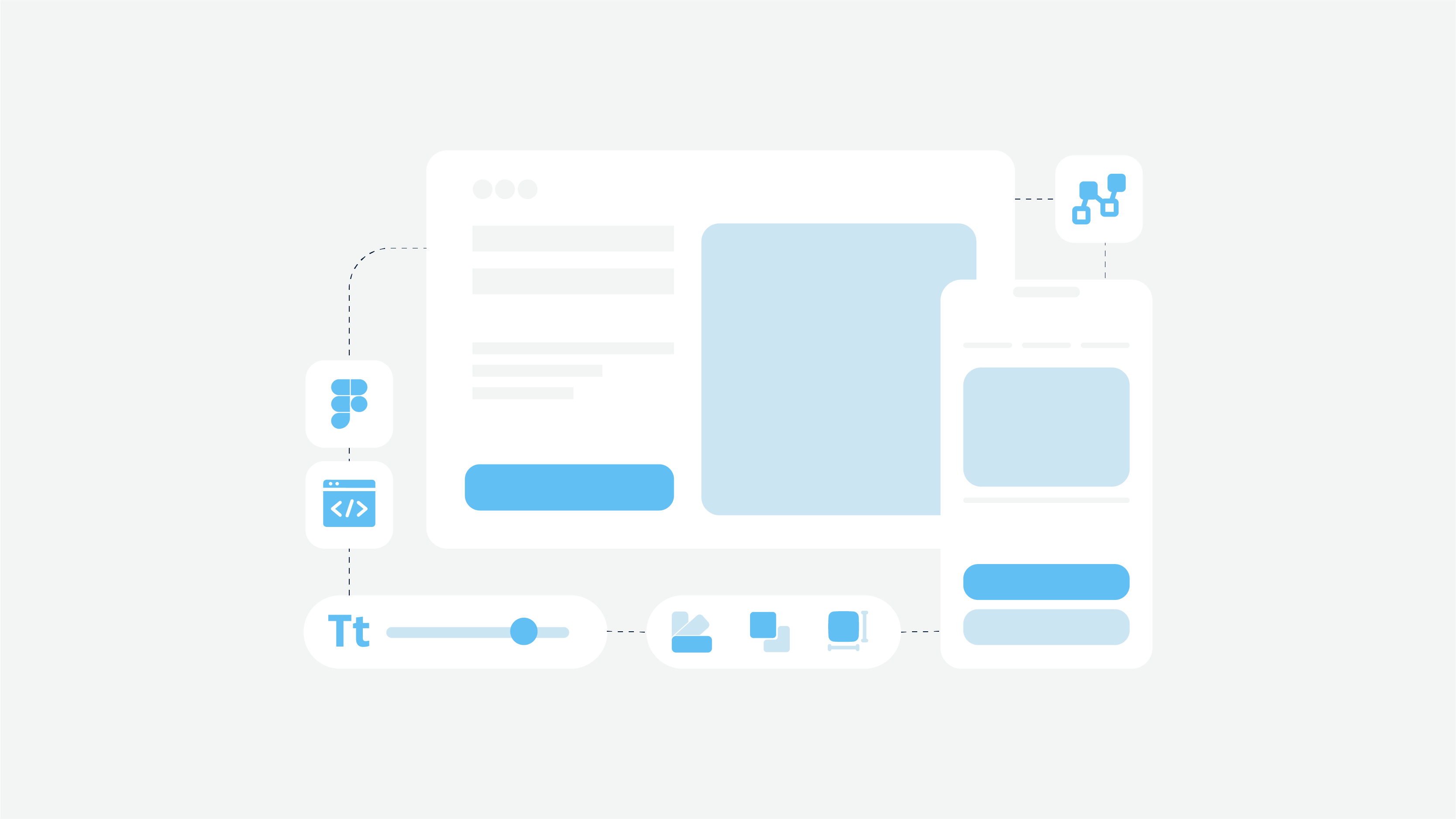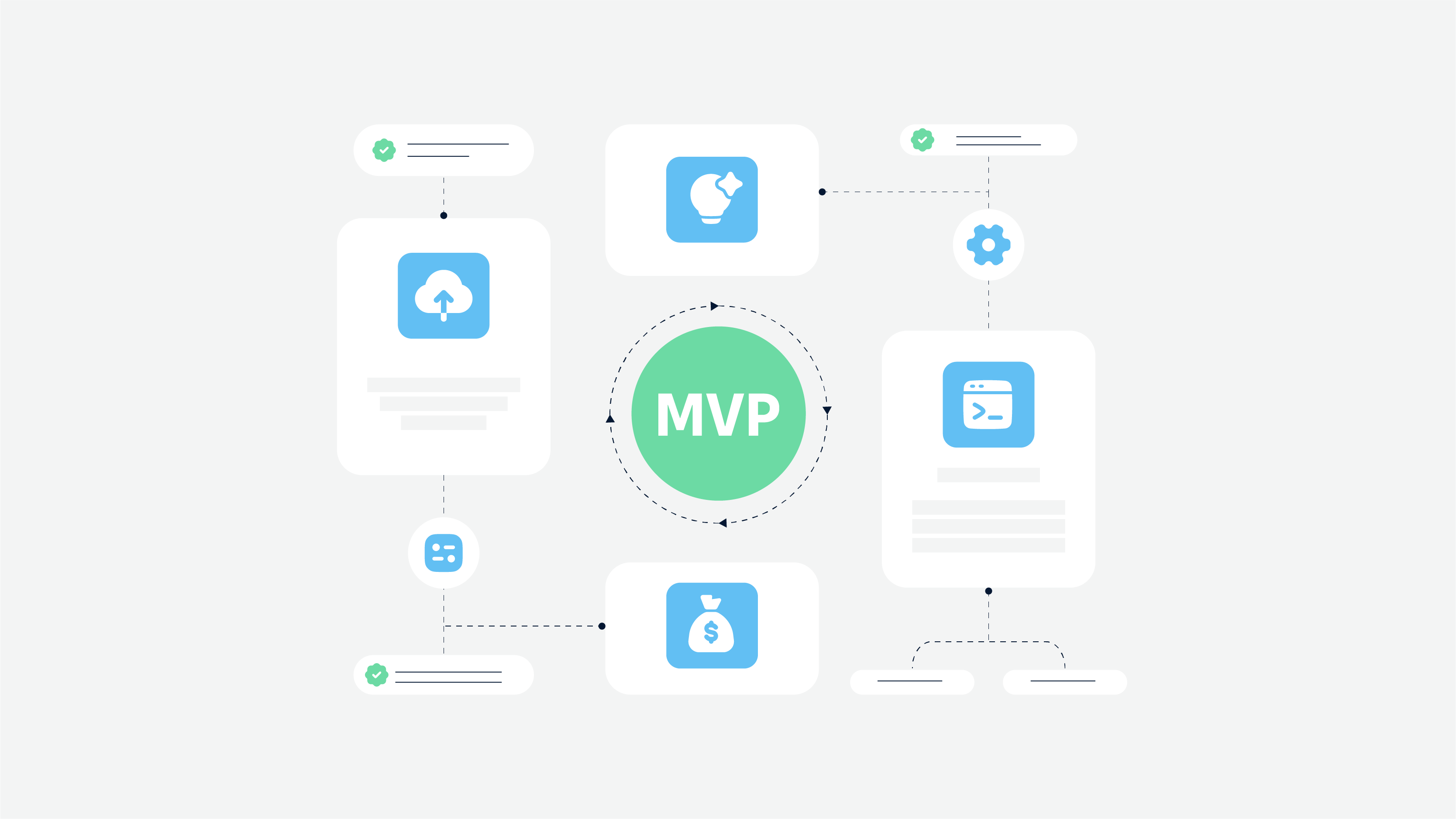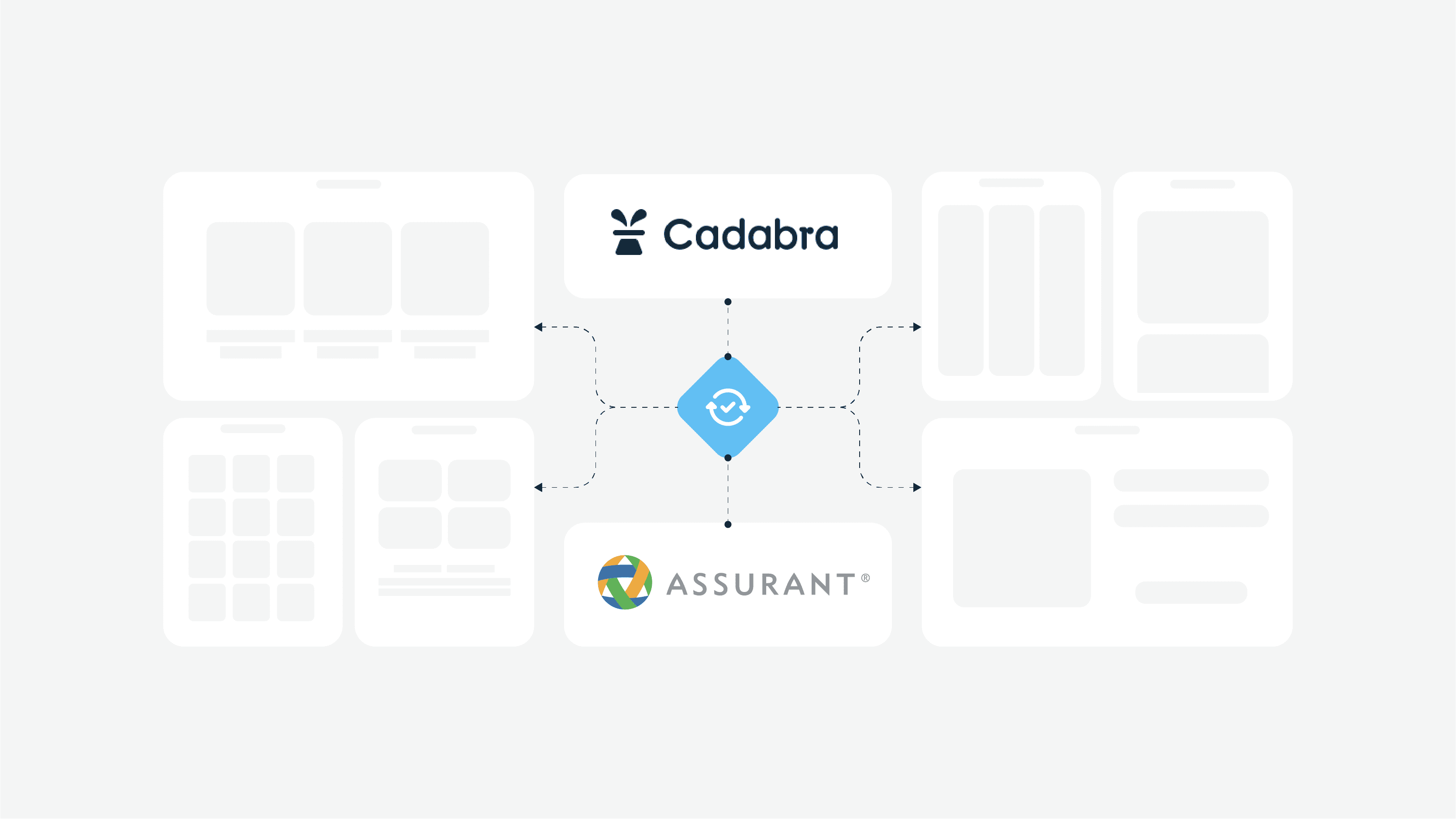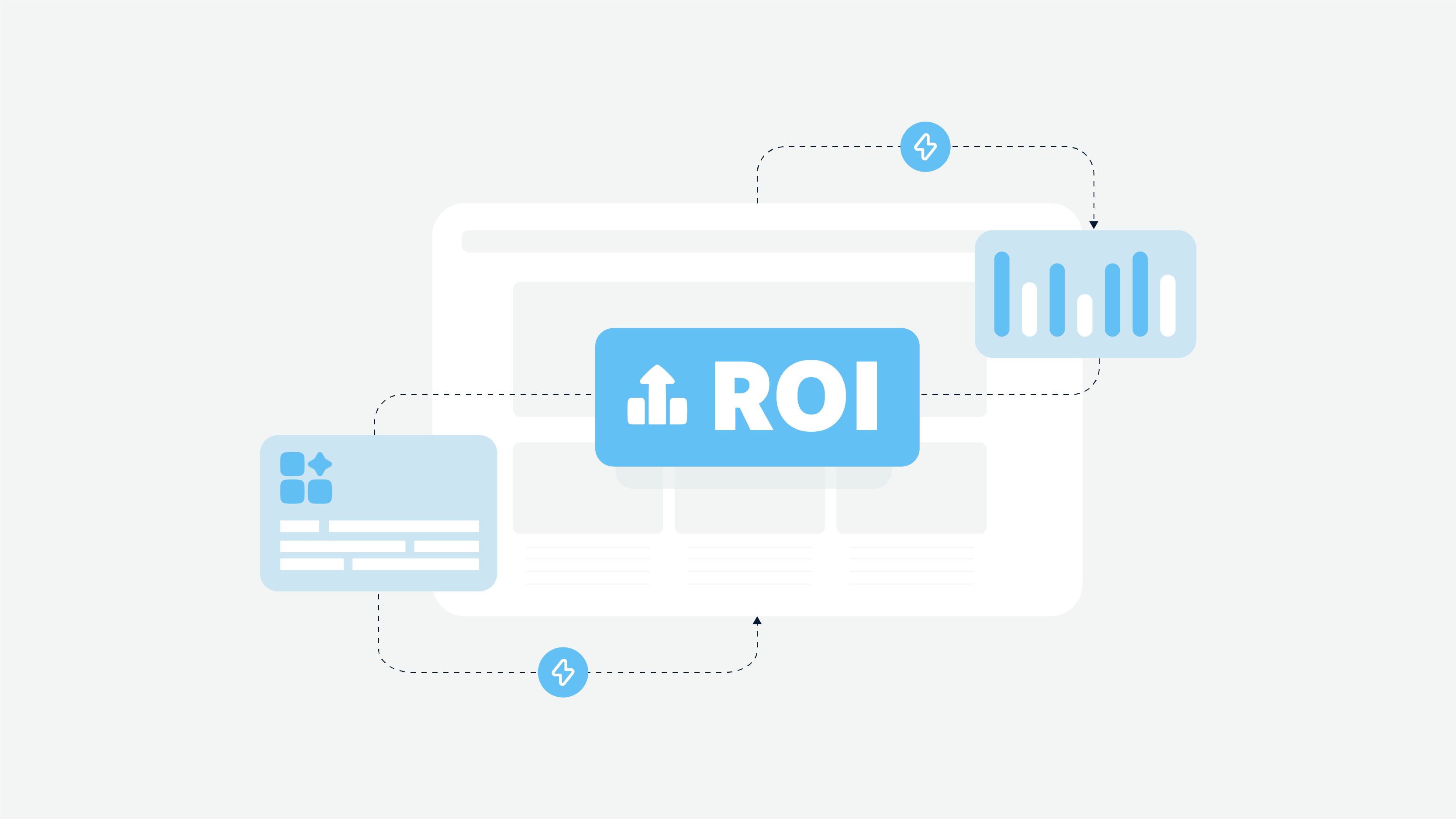Doctors, nurses, and other medical staff needed to deal with a pile of paper documentation. It took a lot of time, and it was necessary to have enough space to store all medical papers. That is why hospitals and relevant healthcare organizations started switching to electronic health and medical records (EHR/EMR).
However, EHR and EMR implementation require specific skills, it also takes time, costs money, and healthcare organizations need to be aware of all nuances to implement electronic records wisely. Therefore, you will find the EHR/EMR implementation plan to follow in our detailed guide.
What Does EMR Implementation Mean?
We think you have already guessed what EHR or EMR implementation means. It doesn’t imply medical software development. The implementation process includes software integration into the workflow of the organization. In this case, a healthcare organization.
Thus, the implementation process includes planning each step, cooperating with specialists, and other relevant procedures to help any healthcare institution transform patient charts and documents into digital form.
The Difference Between EHR and EMR
EMR and EHR are not the same, but they have a few similarities. To avoid confusion, we need to clarify what these both conceptions mean.
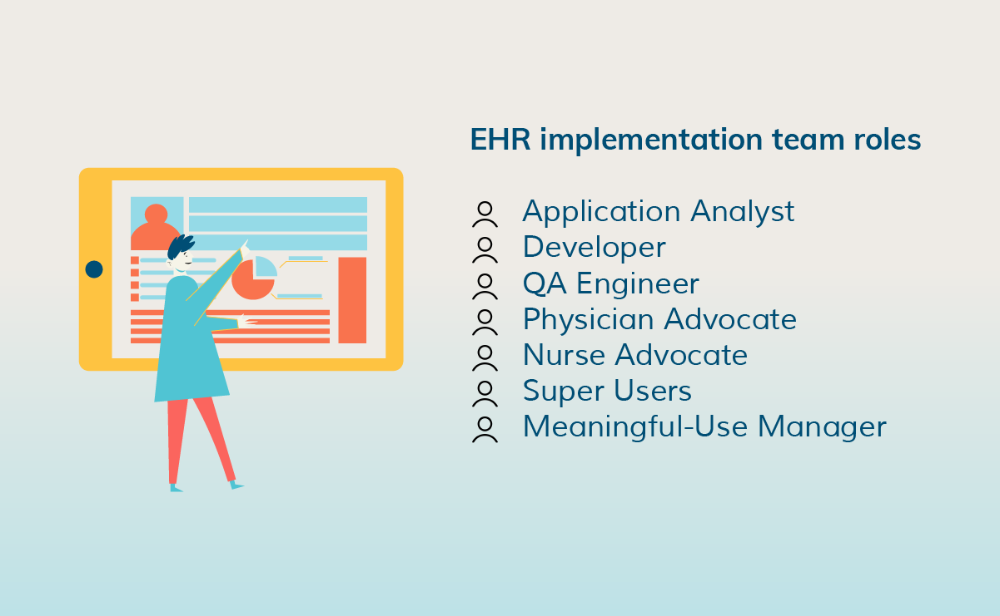
EMR (electronic medical records) are a digital version of a patient’s chart. One medical record usually contains a treatment history and other medical information in one practice. EMR is required for one doctor, and it is not shared. That is, when a patient decides to select a new doctor, their medical record isn’t handed over to a new doctor.
As for EHR (electronic health records), these records play a more crucial role in patient’s treatment since it is available for all doctors who work with a patient. EHRs contain more detailed information about the patient, including test results, medication history, demographics, etc. EHR is more critical in the healthcare industry since it includes 360-view information about any patient.
Start With EMR/EHR Software Selection
The implementation of EMR/EHR starts with the selection of appropriate software for your personal needs. Do you need EHR/EMR for your private practice (if you work as a general practitioner) or a large clinic/hospital? Requirements may vary, but there are specific steps you will follow in any case.
Use an off-the-shelf product. There is a wide variety of EHR and EMR software available in the market. You can pick the right one that meets your needs and use it in your organization. However, such solutions may have unnecessary features or vice versa it won’t have all features you need.
Create custom software. Well, in some cases, successful EMR implementation (as well as EHR) is impossible. If your requirements are unconventional, and you cannot find a ready-made solution, you need to cooperate with a software development company to create a custom EHR/EMR solution.
Your custom solution will be a preferable option if you want to get a multipurpose product for your organization. The best way is to contact the Cadabra Studio team that will make your medical software from scratch. Just drop us a line!
Crucial Steps To Take During EHR/EMR Implementation Process
If you want to know how to implement EHR or EMR in your business successfully, you need to follow the steps to consider all vital nuances. Our goal is to provide you with detailed information so that you can avoid failures.
A Roadmap Is A Must
In fact, an implementation roadmap includes all tasks you will need to perform during the implementation process. We will describe these tasks below, but the plan is required to structurize and simplify the entire process. It is similar to a mobile app business plan — when you have one, the development team will be able to immerse in the project faster. And it will help you move the right path as well.
The article about the mobile app business plan and tips to create it may also be necessary for you, so hurry up to read it.
Build A Team For Successful Implementation Of EMR/EHR
If you are a newbie in this process, and your budget is large enough, we recommend hiring the EMR implementation specialist. And yes, this specialist may work with EHR as well. A specialist’s role is to be responsible for the implementation process, configuration, team training, and their final goal is to ensure the successful adoption of EMR/EHR.

However, the EMR implementation specialist is not the one member of your team. EHR implementation team roles include:
Application Analyst (responsible for data migration);
Developer (if you order the app development from scratch, the assigned developer will be responsible for app customization);
QA Engineer (testing and assurance);
Physician Advocate (they collaborate with physicians and help them train, switch to electronic records smoothly);
Nurse Advocate (they do the same things physician advocates do, but only they collaborate with nurses);
Super Users (these are the first users who will test the EHR/EMR system and give their feedback).
Also, it may be necessary to hire a Meaningful-Use Manager if you live in the USA. Meaningful use is a concept of EHR adopted in the Health Information Technology for Economic and Clinical Health (HITECH) Act in 2009. It implies the use of a certified EHR system in a meaningful way, and the MU manager is the one who will control this process.
As for the EMR implementation specialist, they are the kind of project managers who control the implementation process from A to Z.
Plan The Deadlines
If you don’t want to spend unexpected costs, and you need to implement everything within a specific timeframe, then cooperate with the implementation specialist and plan the EMR implementation timeline. The project’s scope and analysis of all related details will help you draw up the correct implementation deadline.
Estimate The Cost Of EMR Implementation
You need to allocate a budget for the implementation of EMR and EHR. You can make use of third-party business analyst services. They will help you estimate the average cost of EMR implementation. A business analyst role remains high in the IT business, and the article about business analyst responsibilities may help you.
So, the EMR implementation cost may include purchasing hardware, salaries to all team members, consultation, etc. It is impossible to forecast the precise budget since there are many factors involved in the estimation process.
If you’re planning to create a custom EHR/EMR app, and you don’t know how much it will cost, contact Cadabra Studio, and our managers will provide you with a detailed estimate.
Proceed To The Data Migration Process
The data migration process is the core of the implementation procedure. It includes converting all paper documentation to electronic records, verification and cleansing of data, database configuration, testing and quality assurance processes, etc.
The application analyst is responsible for this process so that they will handle all relevant tasks. One analyst cannot be enough in some cases, and if you want to speed up the migration process, it is recommended to hire more analysts.
Consider EMR Implementation Challenges
The obstacles to the implementation of EHR/EMR are quite real, and you should be prepared for them. Even if you don’t solve them, and hired specialists will do it for you, you still need to get acquainted with all pitfalls.

The first challenge that may appear is staff resistance. It means that some conservative doctors may have doubts concerning the integration of electronic health records, so it can be the reason for the implementation delay.
Time-consuming training. The first challenge is closely related to the second one. It will take time to train every specialist to use the system properly.
Also, consider potential threats to data privacy. Electronic health records may become the targets of cyber-attacks. That is why you need to ensure your EHR/EMR system complies with the HIPAA regulations (for the US residents) and GDPR (for the EU residents). You can find the compliance checklist in our HIPAA-related article and GDPR-related guide.
This article may be interesting for you: GDRP Compliance Checklist
Finally, the compatibility issue remains. Some electronic records systems may not be compatible with other systems, so information transfer among multiple providers can be a real challenge.
Evaluate The Implementation’s Success
And your final but not less important step is to measure the success of EMR implementation. Even when you have done everything effectively, you need to evaluate the implementation’s success. Thus, you can analyze user feedback, medical staff feedback, and consider their satisfaction level.
Also, you need to perform ROI calculations (return of investment) to assess future profits and gather error rates to evaluate the quality and performance level. Mind that there may be more critical metrics to monitor, so take them into account.
Is EHR/EMR Implementation Necessary?
The guide above helps you discover the ways on how to implement the EHR system. Although there are some drawbacks like data privacy issues, compatibility issues, and others described above, you should remember that obvious and strong advantages prevail.
Firstly, electronic records systems are more convenient and efficient both for patients and physicians. Secondly, despite the costs required for the implementation, workflow optimization and reduction of storage costs will be one of the best advantages.
Also, we cannot ignore the protection of medical records and easier interaction with patients. They don’t need to visit doctors personally when they can communicate via integrated systems.
So, the answer is yes, you definitely need to implement electronic records in your healthcare organization. The era of digital transformation has come. And if you want to provide patients with a high service level, you must take electronic records into account.
But if you still have any questions or need to get a consultation from experienced professionals — get in touch with our managers. The assistance will be provided right away!
This article may be interesting for you: Telemedicine App Development



